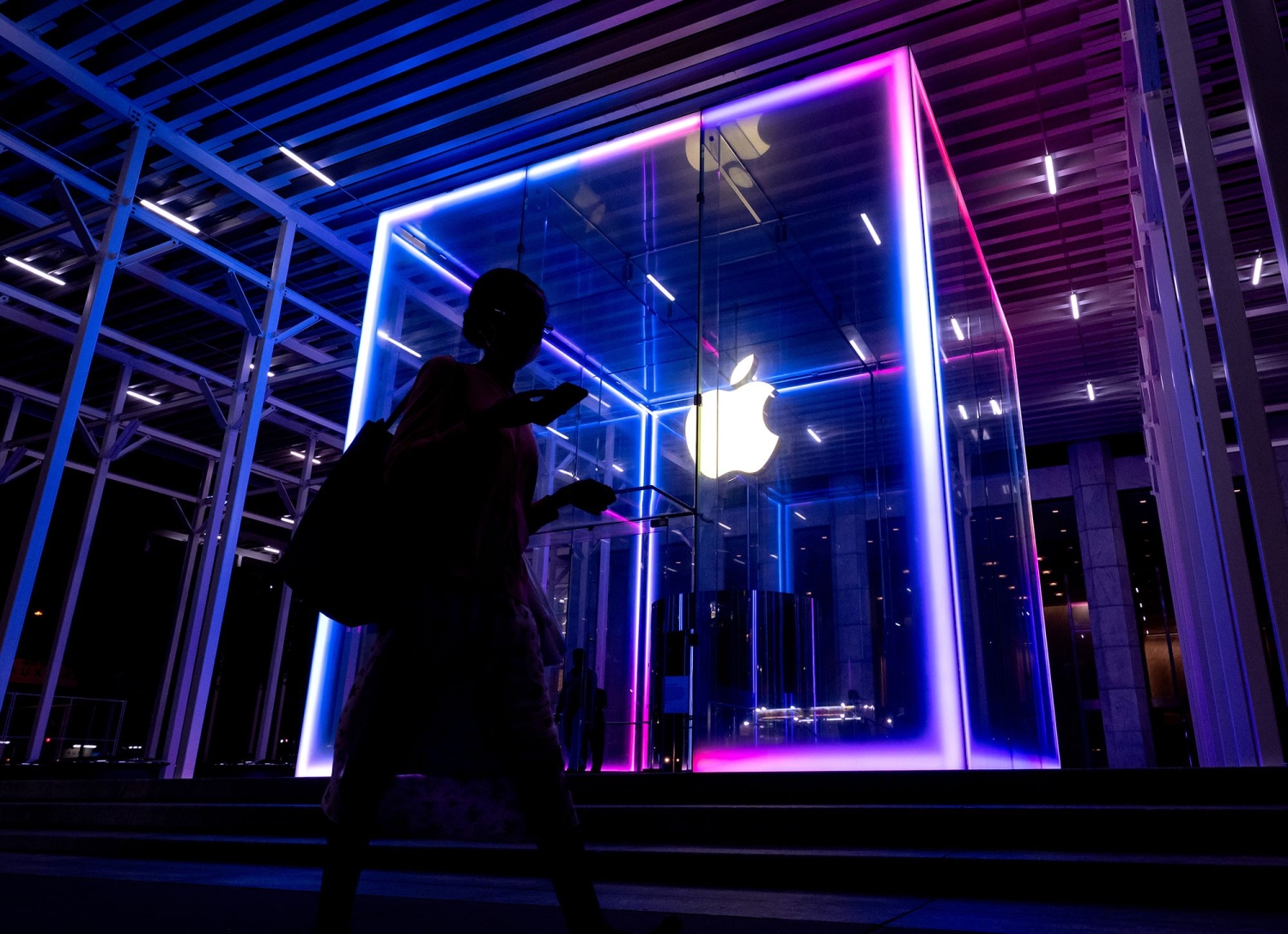
This article is more than
3 year old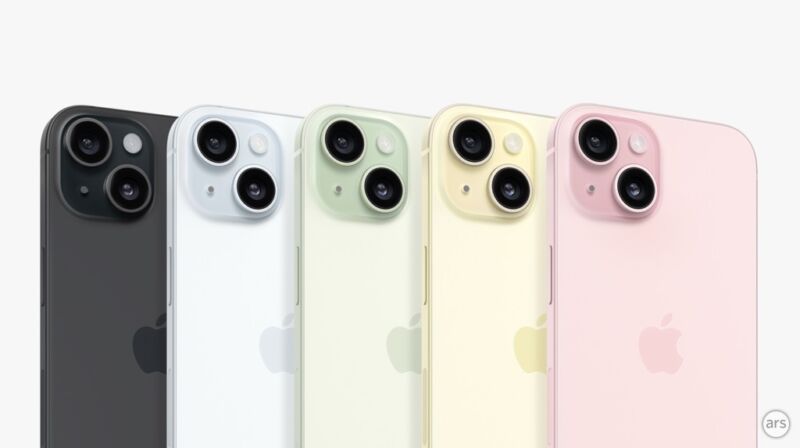
Apple announced its next flagship smartphone during a livestreamed event today. The iPhone 15 mostly resembles its predecessor but swaps the top-of-screen notch for the "Dynamic Island" Apple introduced with the iPhone 14 Pro last year, and it ditches Apple's proprietary Lightning port in favor of the industry-standard USB-C.
Like the iPhone 14, the iPhone 15 comes in two screen sizes: 6.1 inches for the standard phone, and 6.7 for the iPhone 15 Plus. The two models are the same apart from the screen sizes. The iPhone 15-series' overall design is also similar to that of its predecessor, with a glass back and front and an aluminum enclosure.
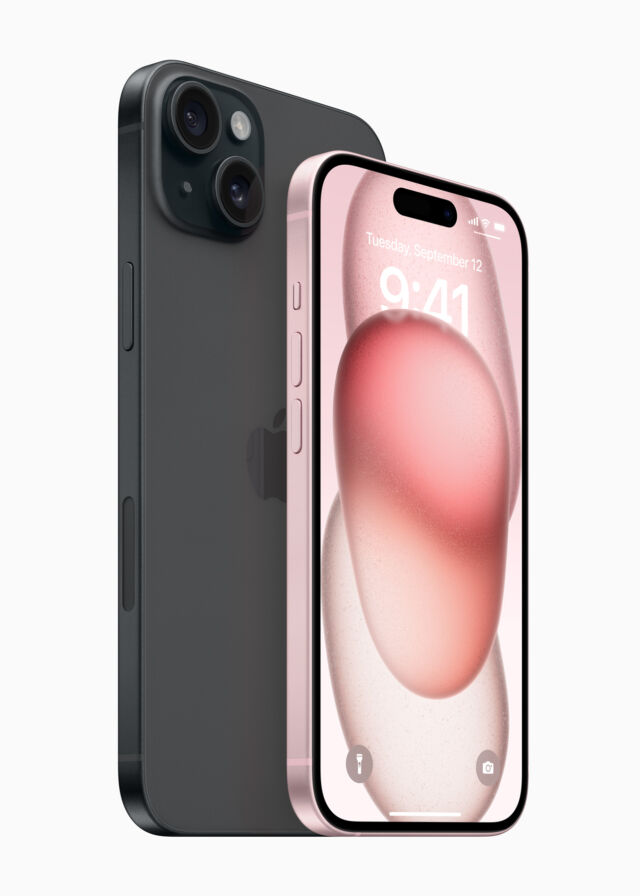
The edge of the aluminum enclosure has a new contoured design that looks a bit different from the iPhone 14, though. Apple also claims the iPhone 15 devices are the first phones to have a "color-infused back glass." Apple's announcement said that it strengthened the phones' back glass with a "dual-ion exchange process" and then polished it with nanocrystalline particles and etched it for a "textured matte finish." The new iPhones still have a Ceramic Shield front cover and are water and dust-resistant.
As far as the internals go, we're looking at a modest bump from the A15 system-on-a-chip to the A16, which was first seen in last year's iPhone 14 Pro and iPhone 14 Pro Max. You can expect about 15–20 percent improved performance.
Apple has upgraded the main camera system on the new iPhone to a 48 MP sensor that takes 24 MP photos, using a default computational photography process. This is the same system found on the iPhone 14 Pro. Alternatively, you can opt for the "2x Telephoto" option with three "optical-quality" zoom levels (0.5x, 1x, or 2x).
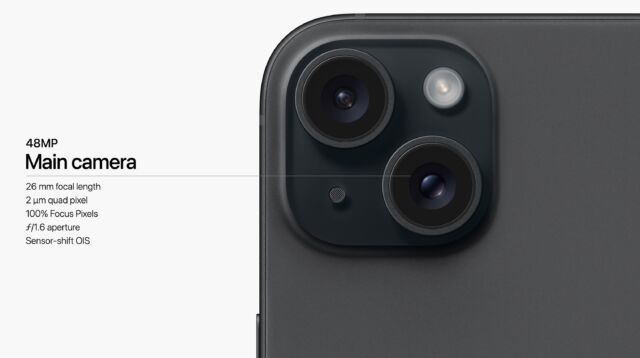
Additionally, for all of the iPhone 15's cameras, machine learning will automatically switch the main camera into portrait mode, with richer color and low-light performance, when appropriate. Night Mode ("sharper details and more vivid colors") and Smart HDR (brighter highlights, and improved mid-tones, shadows, and renderings of skin tones) are reportedly upgraded, too. The cameras will also introduce focus and depth control, which lets you switch focus on an image from one subject to a different subject after the photo has been taken.
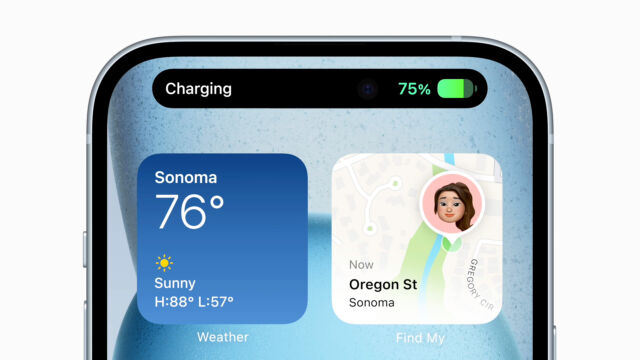
The Dynamic Island aims to make the best of the necessary gap in the front-facing screen that contains the selfie camera and Face ID sensors. It uses the area around that hardware to display various UI elements, like notifications. In our review of the iPhone 14 Pro last year, we said we liked this feature but didn't necessarily consider it enough of a reason to justify upgrading to the Pro model—but now it seems it will be available across all of Apple's flagship phones.